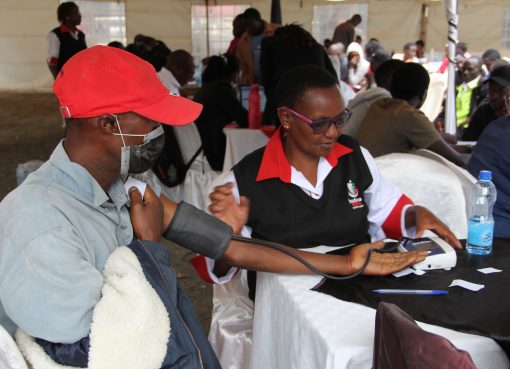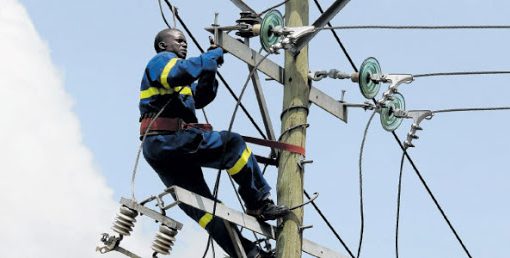The production of fish farming is becoming a lucrative venture in the country and with the introduction of new modern fish farming techniques like cage farming, liner ponds and reservoir, the fishing enterprise will be escalated to new heights.
However, the major challenge in the fish farming industry has been the high prices of acquiring fingerlings and feeds.
Acquiring fingerlings has become a major problem in most places across the country, and those in close proximity have found it difficult to purchase them due to high costs.
But to Mr Denis Odhiambo, an aqua-culturist and technician at Ranenville Aqua-farm in Sakwa, Awendo Sub County, the challenge of purchasing fingerlings has forced the farm to rethink their strategies on fish farming.
Odhiambo says that acquiring fingerlings became a huge problem because of financial implications. The privately owned farm had to assemble its hatchery to satisfy its fish production as well as ease the pain of other fish farmers in the county.
“We had established more ponds that needed re-production of fingerlings and continued purchase of fingerlings was becoming quite expensive”, he explained during an interview by the pond side.
The Ranenville aqua-farm having satisfied all the conditions to start a hatchery plant was authenticated in 2023 by the Kenya Marine and Fisheries Research Institute (KMRI) and the Fisheries department at both levels of government as a hatchery producer in the county.
The aqua-culturist discloses that the Aquaculture Business Development Programme (ABDP) played a critical role in ensuring the farm was certified to start a hatchery.
The hatcheries which have a capacity to produce over 100,000 fingerlings (tilapia and cat-fish) in a month are currently producing strain F-8 generation fingerlings that were hither-to outsourced from Sagana Agricultural Centre.
The strain which was developed by the KMRI and the Kenya Agriculture and Livestock Institute (KALRO) seeks to address the dwindling wild strains in the Country.
The new F-8 strain breed has a faster growth rate, reducing the period to harvesting of two cycles annually. They are also low feeders and resistant to fungal and viral diseases.
The aqua-farm has so far supplied over 300,000 fingerlings in the county and an additional of more than 200,000 fingerlings to other neighbouring counties.
This year, Ranenville Aquafarm has been able to supply over 200,000 fish farmers with fingerlings and fish feeds either through support initiated by the ABDP and the Migori County or through direct purchase.
The fingerlings production at the Ranenville Aquafarm, however, is a complex task that requires technical skills and preciseness. According to Odhiambo, the eggs are collected from their brooding ponds paired in a ratio of three to one (females to males).
A population of 72 brooding stock in each pond is sufficient to produce eggs that are collected and taken to the hatchery for hatching.
The hatchery process then takes between 10-21 days after eggs are collected from the brooding ponds that are placed in special plastic buckets for hatching.
Odhiambo explains that with the constant aeration through the air circulatory system and heaters for temperature control, the eggs are frequently fed on starter mash for their growth.
He says that each bucket is able to carry 4,000 baby fish that are then transferred to nursery ponds for further growing subjecting them to harsh environmental weather for survival adaption.
“In the nursery ponds, we take fingerlings where they grow and start feeding on plankton, starter mash and zooplankton as they grow as well as to adapt to the harsh climate condition”, noted Oadhiambo.
The nursery ponds at the Ranenville Aqua-farm consist of Alevin and Juvenile tilapia that are omnivorous at this stage; meaning that they are opportunistic feeders that ingest both plants and animals without specialization.
Aqua-farm has also a well-established daily farm that generates manure, a key nutritional material in farm ponds.
Odhiambo emphasizes that the introduction of organic fertilizers in the nursery ponds promotes the growth of plankton and algae that provide nutritional value to the marketable tilapia size in 6 months.
Apart from hatching fingerlings, Ranenville also rears fish for sale with their biggest market being Rio Fish Limited, a local company based in Rongo-Migori. Other markets include the local fishmongers, residents and institutions within Migori and neighbouring counties in South Nyanza (Nyamira, Kisii, Homabay and Migori).
The aquafarm has also established its feed formulation to cut the production costs and maximise profits to fully realise the potential of the farm.
By Geoffrey Makokha and George Agimba





